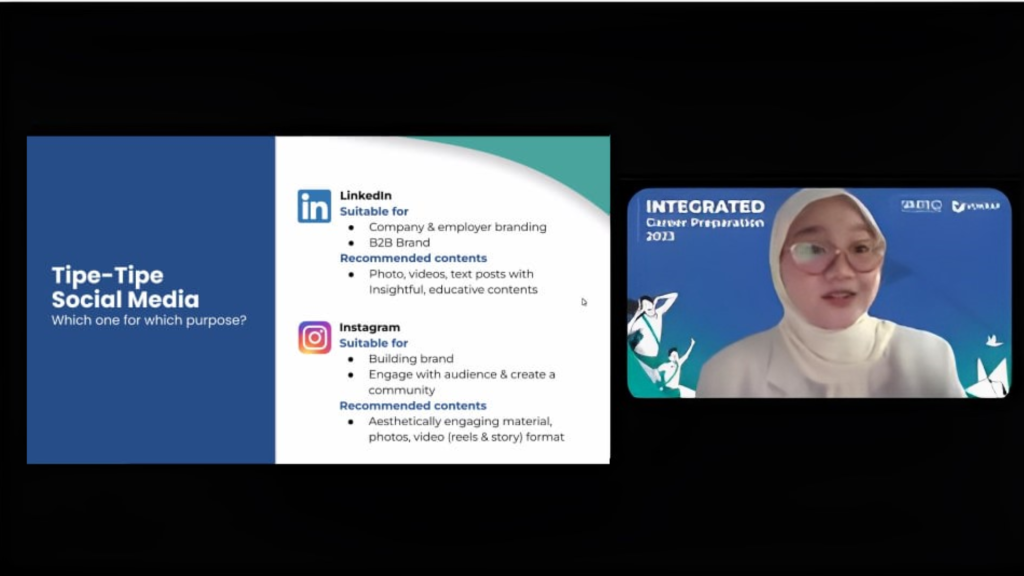Social media has evolved from a platform for sharing photos and keeping up with friends to a powerful tool that influences how companies interact with customers, market products, and build their brands. It’s no longer optional for businesses; it’s a necessity.
Farsya Fadhillah, a product marketing specialist at PT Telkom and specialist in the field of Key Opinion Leader, explained the topic of how to accelerate social media growth organically at Upskill Series 5 in Bandung (7/10). According to Farsya, social media platforms such as Instagram, TikTok, and Twitter are now trading places. The feature allows business people to interact with customers, create content, or advertise their products.

Social media, which is used as a place to do business, creates a socio-commerce environment. Each platform has its own characteristics and unique features. Besides its features, it also has the characteristics of its users.
For example, TikTok is suitable for creating user-generated content and affiliate/KOL programs. Recommended content can be aesthetic photos, videos with a maximum duration of 3 minutes, live streaming, storytelling, education, and inspirational stories. Meanwhile, YouTube is suitable for educating and building engagement with viewers. Recommended content is in the form of tutorials, behind-the-scenes videos/short stories.
On the other hand, LinkedIn is suitable for company branding and B2B brands. The content that can be created can be photos, videos, and text posts with insightful and educational content. Lastly, Instagram is perfect for building a brand, interacting with an audience, and creating a community. The ideal content is aesthetically attractive material, photo, and video formats (Reels & Snapgram).
With so many variations of social media platforms, people, of course, use some of these media for reasons of wanting to communicate with other people, fill their free time, and see what is being discussed or trending. Based on research, Indonesian people who use social media are aged 18 – 34 years, and the most widely used social media platform is YouTube.
Understanding the audience and competitors is the first step in planning a social media campaign, achievable through surveys, interviews, online reviews, and audience and competitor observation. Once the social media landscape is clear, the next step involves building five key marketing stages: user awareness, interest, intention, action, and remembrance. Each stage requires tailored approaches and the setting of KPI targets to track progress and make data-driven decisions.
To determine KPIs, five elements must be considered: measurement, targets matching the goal’s size and period, clear data sources, reporting frequency (usually monthly), and assigning responsibility for progress reporting. Content, the primary tool in digital marketing, comprises paid and organic types, with users generating organic content. It encompasses education, entertainment, promotion, and inspiration pillars. Combining two pillars in a single post, like educational content with a soft-selling promotion, can be effective.
Encouraging user-generated content is essential for organic social media growth. This can be achieved by creating challenge trends and inviting users to participate in engaging ways. Effective copywriting techniques include using text that piques curiosity, sharing positive stories, and crafting narratives, whether positive or negative, to engage audiences.
Finally, continuous evaluation and feedback collection help businesses understand how customers perceive their brand. Monitor feedback from various sources, such as social media, online reviews, surveys, email, and customer service. Categorize feedback as positive, neutral, or negative and identify recurring themes and keywords to draw actionable insights.




